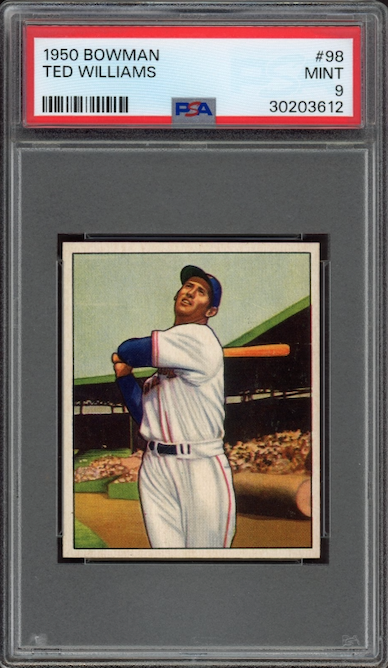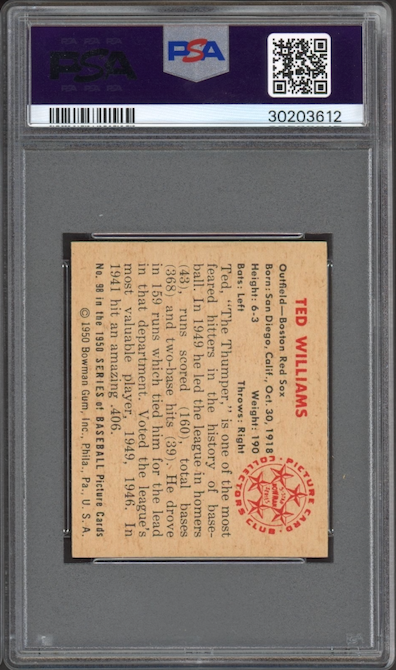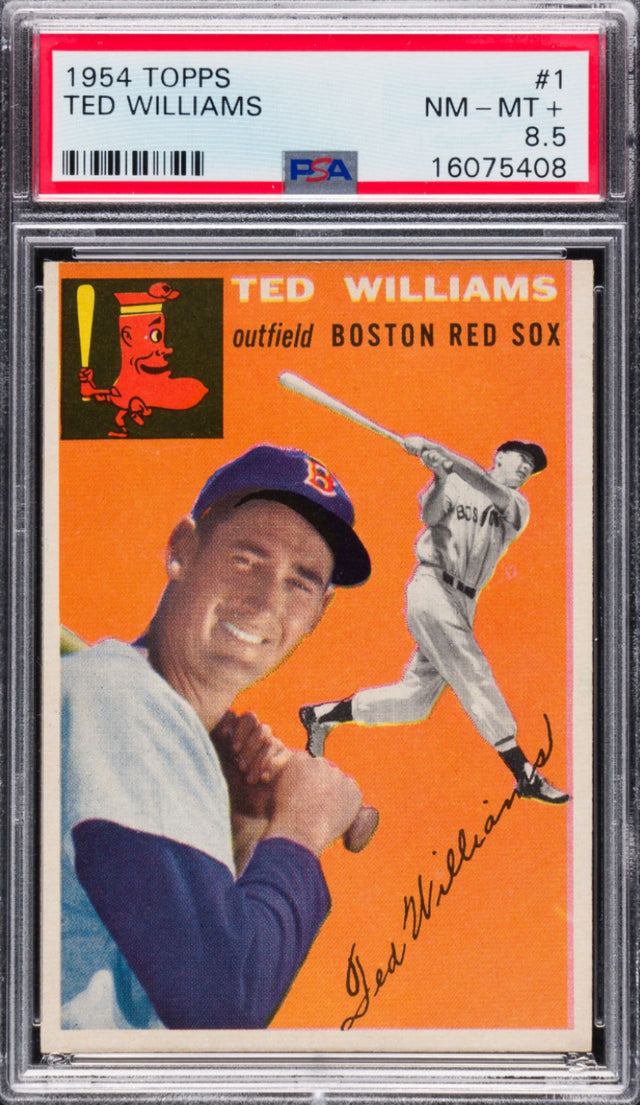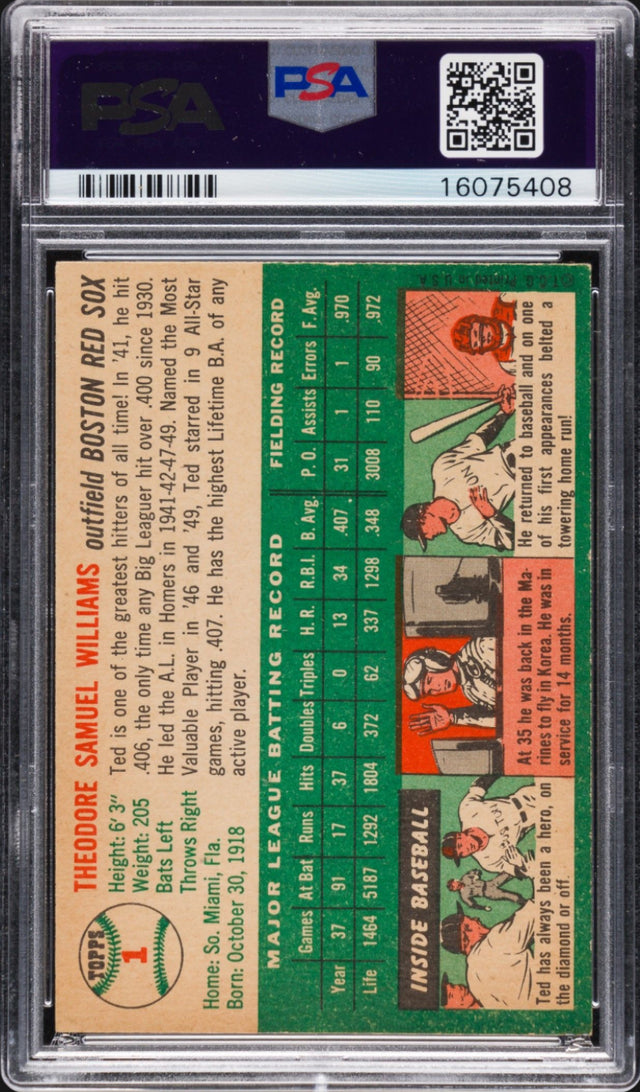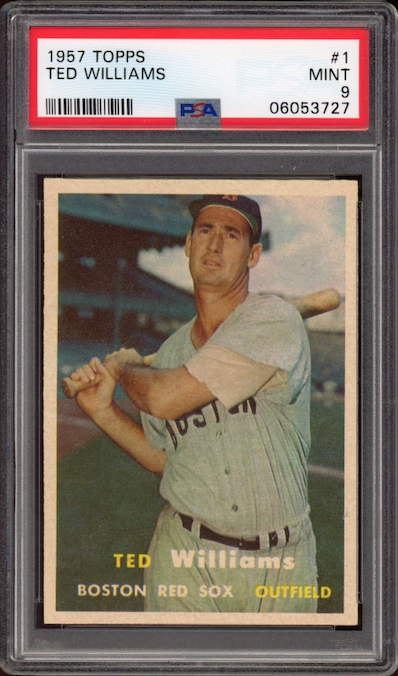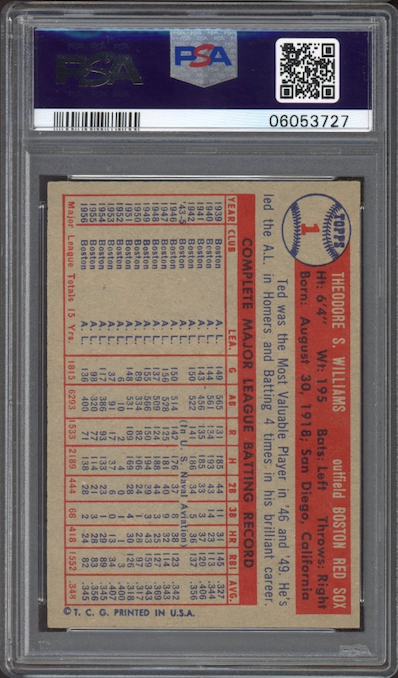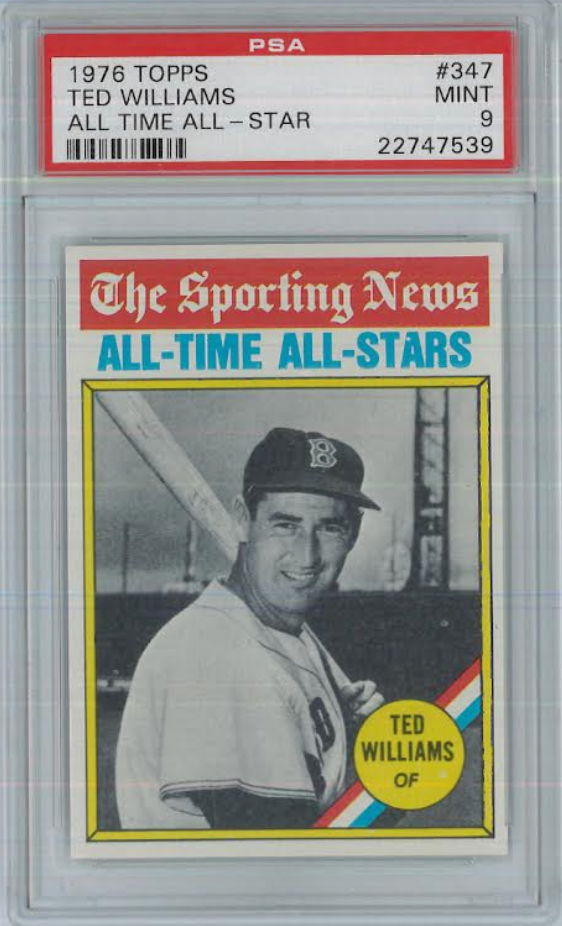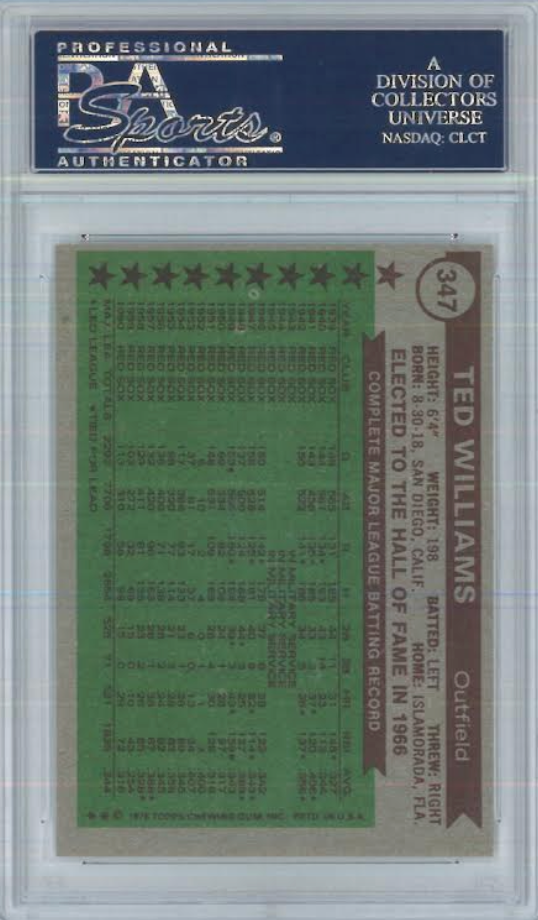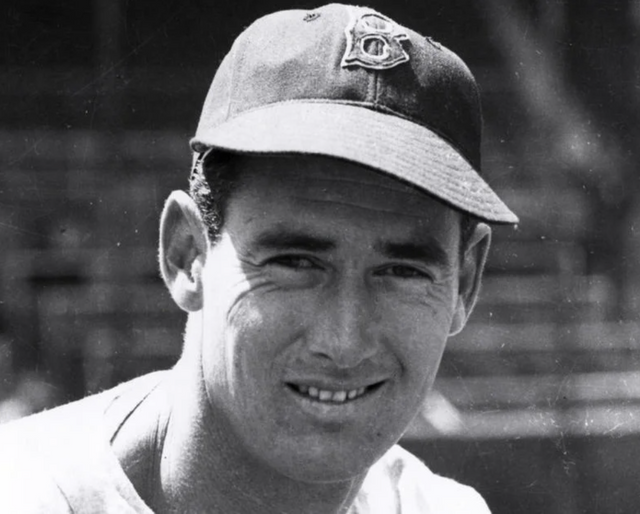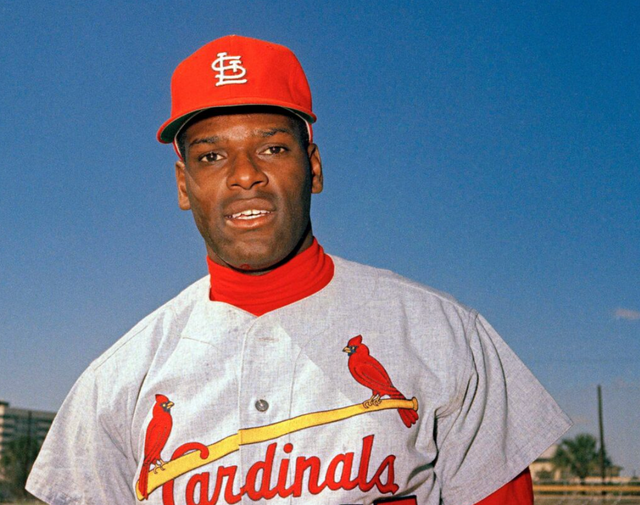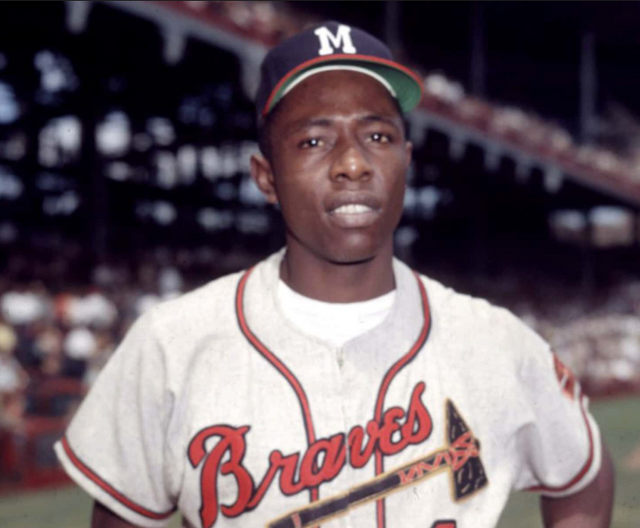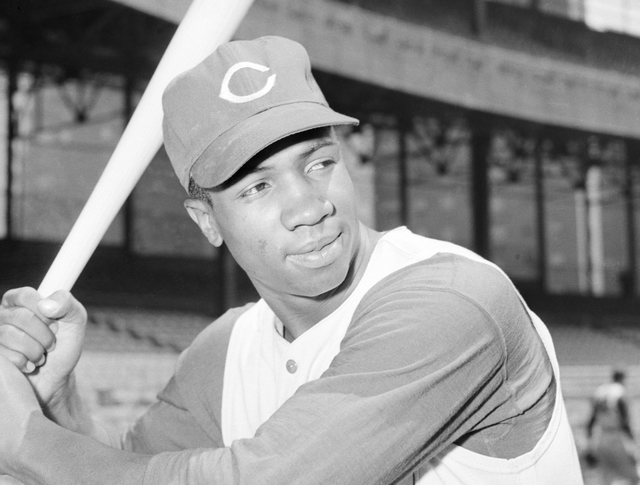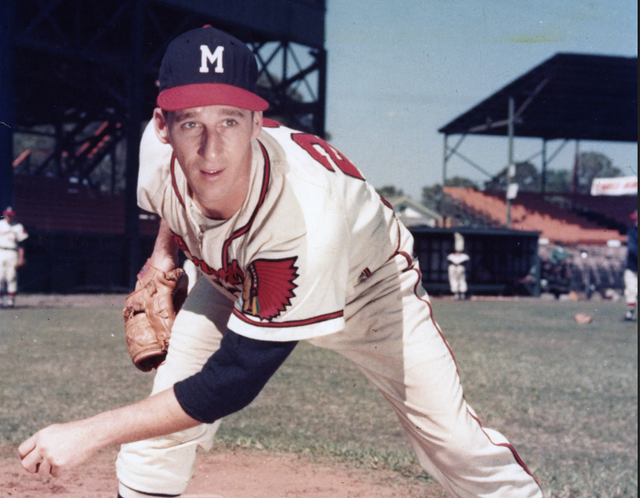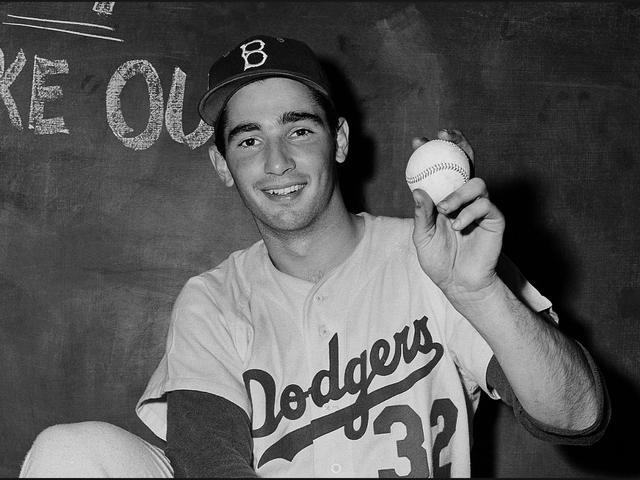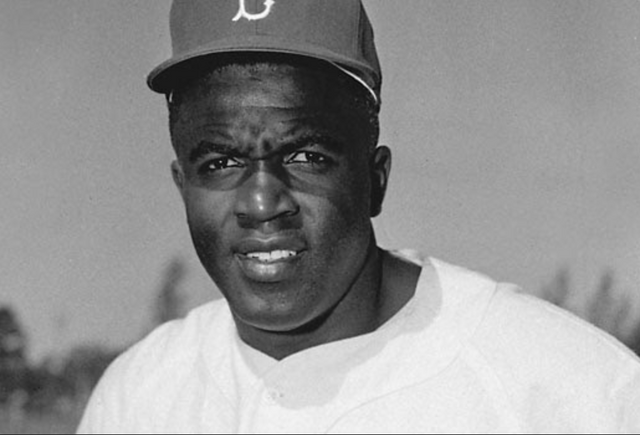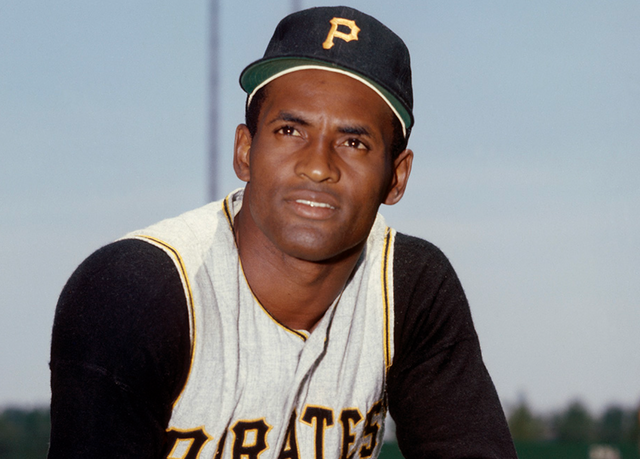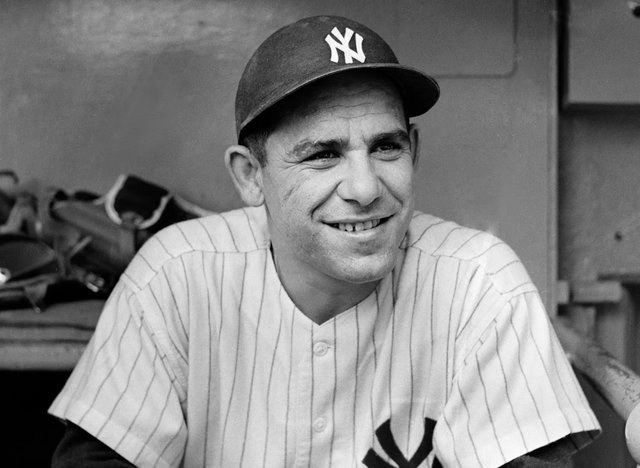Ted Williams
The Splendid Splinter and Baseball’s Last True Hitter

If baseball is America’s game, then Ted Williams is its poet laureate. Known as “The Splendid Splinter,” Williams didn’t just swing a bat—he wielded it like an artist’s brush, painting the strike zone with hits that became masterpieces of precision and power. Over a career that spanned two decades and two wars, Williams cemented his legacy as one of baseball’s greatest hitters, blending raw talent with an almost scientific understanding of the game. This collection celebrates the brilliance of a player who lived to hit and played to perfect every at-bat.
The Pursuit of Perfection: Career Highlights
From the moment Ted Williams stepped onto a Major League diamond, he pursued one goal: to be the greatest hitter of all time. And by all accounts, he achieved it. Over 19 seasons with the Boston Red Sox (1939–1960, with interruptions for military service), Williams compiled a staggering career batting average of .344, amassed 521 home runs, and drove in 1,839 RBIs. But numbers alone don’t tell the full story of his genius.
Williams’ greatest achievement—and one that remains unmatched—was his .406 batting average in 1941, making him the last player to hit over .400 in a single season. What makes the feat even more legendary is the story behind it: on the final day of the season, Williams could have sat out to preserve his average, which sat at .39955 (rounding up to .400). Instead, he played a doubleheader, went 6-for-8, and locked in his place in history.
Ted’s mastery of the strike zone was unparalleled. He led the American League in on-base percentage 12 times and finished his career with an otherworldly .482 OBP—the highest of all time. Add to that two Triple Crowns (1942, 1947), two MVP awards, and 19 All-Star appearances, and you get a player whose numbers could have only been dreamed of by mortals.
Service, Sacrifice, and Legacy
Ted Williams’ baseball career is even more remarkable when you consider what he gave up. He didn’t just play through injuries—he paused his career twice to serve his country.
During World War II, Williams enlisted as a naval aviator, serving from 1943 to 1945. At the peak of his abilities, when most players would have padded their stats, he left the game to defend freedom. As if that weren’t enough, Williams answered the call again during the Korean War (1952–1953), where he flew 39 combat missions. Pilots who served alongside him, including John Glenn (the future astronaut and senator), marveled at Williams’ skill in the cockpit, calling him a natural fighter pilot.
When Williams returned from Korea, he didn’t miss a beat. In 1957, at age 39, he won his second batting title with a .388 average, proving that time—and two wars—had not dulled his greatness.
Two Stories That Capture the Legend
1. The Science of Hitting:
Williams approached hitting like a physicist solving a puzzle. He famously broke the strike zone into 77 individual “cells” and knew exactly where his sweet spots were. His book, “The Science of Hitting,” is still considered gospel for hitters. In it, Williams declared, “Hitting is 50% above the shoulders,” emphasizing that patience and pitch selection are just as important as raw power.
Williams also credited his legendary eyesight—reportedly 20/10 vision—which allowed him to see the seams on a baseball and discern curveballs in flight. While lesser hitters swung at anything close, Ted Williams dissected pitchers with machine-like precision.
2. The Final At-Bat That Became a Farewell Symphony:
On September 28, 1960, Williams stepped to the plate for the final time in his career. The crowd at Fenway Park held its breath as he faced Baltimore pitcher Jack Fisher. On the second pitch, Williams uncorked a swing for the ages and smashed the ball into the center-field bleachers. A home run—his 521st—on his last swing. Williams famously refused to tip his cap to the crowd, maintaining his stoic demeanor, but the moment spoke louder than words. In that final at-bat, Ted Williams proved, once again, that he was baseball’s ultimate craftsman.
The Most Iconic Ted Williams Cards
For collectors, Ted Williams cards are pieces of history—snapshots of a man who defined an era of baseball greatness. Two of his most iconic cards are treasures of any collection:
1. 1939 Play Ball Rookie Card (#92):
Ted Williams’ rookie card captures the youthful, wide-eyed kid from San Diego who was about to take the baseball world by storm. This card is a cornerstone of vintage baseball collections, representing the dawn of Williams’ legendary career.
2. 1954 Topps Ted Williams (#1 and #250):
In 1954, Ted Williams was featured twice in the Topps set—on both card #1 and card #250. Topps honored Williams with the first card of the set, cementing his status as baseball royalty. The vibrant design, action shot, and portrait make these cards as visually stunning as they are historically significant.
The Lasting Impact of The Splendid Splinter
Ted Williams’ career wasn’t just about numbers—it was about his relentless pursuit of perfection. He played the game the way it was meant to be played: with focus, respect, and fire. Whether he was battling pitchers in the batter’s box or soaring through the skies in wartime, Williams embodied greatness.
This collection celebrates Ted Williams as more than a player. He was a scientist, a hero, a legend, and a symbol of excellence. From his .406 season to his final home run, every moment of his career is etched into baseball history.
The Hall of Fame Exchange proudly showcases the legacy of The Splendid Splinter, a man who once said, “I want people to say, ‘There goes Ted Williams, the greatest hitter who ever lived.’”
Ted, they’re still saying it.
Filters Filter & Sort
-
1950 Bowman #98 Ted Williams PSA MINT 9
$0.00( / )Unavailable -
1954 Topps #1 Ted Williams PSA NM-MT+ 8.5
$32,500.00( / )Unavailable -
1957 Topps #1 Ted Williams PSA MINT 9
$0.00( / )Unavailable -
1976 Topps All Time All-Star #347 Ted Williams PSA NM-MT 8
$120.00( / )Unavailable
More Player Collections
-
Product title
$12.34 -
Product title
$12.34 -
Product title
$12.34 -
Product title
$12.34 -
Product title
$12.34 -
Product title
$12.34 -
Product title
$12.34 -
Product title
$12.34 -
Product title
$12.34 -
Product title
$12.34 -
Product title
$12.34 -
Product title
$12.34

